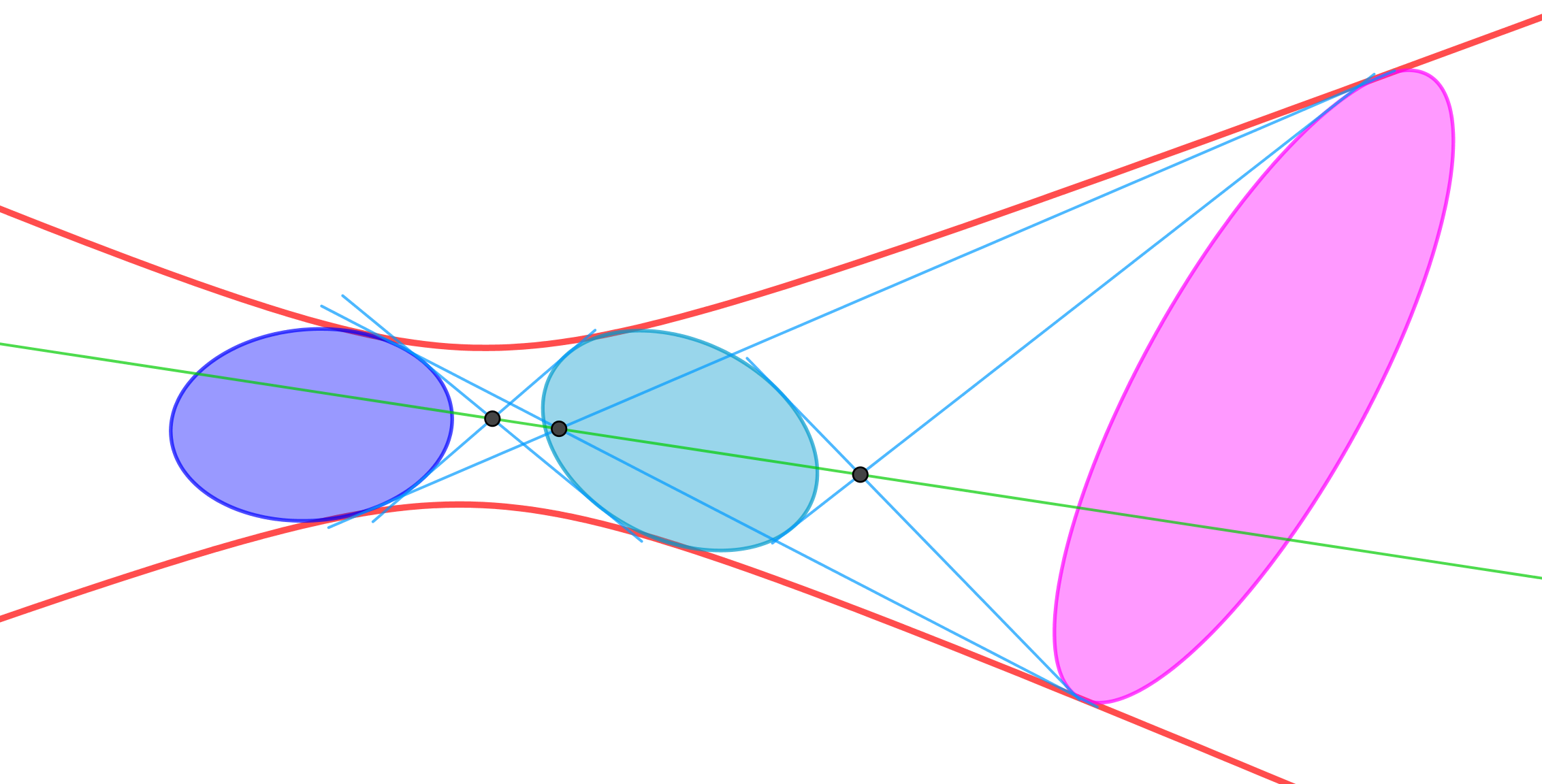This is a consequence of the Double Contact Theorem.
If $S_1$, $S_2$, and $S_3$ are three conics having the property that there
is a point $X$, not on any of the conics, lying on a common chord of
each pair of the three conics (with the chords in question being
distinct), then there exists a conic $S_4$ that has a double contact
with each of $S_1$, $S_2$, and $S_3$ (Evelyn et al. 1974, p. 18).
The converse of the theorem states that if three conics $S_1$, $S_2$, and
$S_3$ all have double contact with another $S_4$ then each two of $S_1$,
$S_2$, and $S_3$ have a "distinguished" pair of opposite common chords,
the three such pairs of common chords being the pairs of opposite
sides of a complete quadrangle (Evelyn et al. 1974, p. 19).
The dual theorems are stated as follows. If three conics are such
that, taken by pairs, they have couples of common tangents
intersecting at three distinct points on a line (that is not itself a
tangent to any of the conics), then (a) the conics have this property
in four different ways, and (b) the conics all have double contact
with a fourth. And, conversely, if three conics each have double
contact with a fourth, then certain of their common tangents intersect
by pairs at the vertices of a complete quadrilateral (Evelyn et al.
1974, p. 22).
Your observation is the last sentence of the quote above. This is all proven in The Seven Circles Theorem and Other New Theorems by Evelyn et al. The proof is a couple of pages which I won't reproduce here, manipulating equations of lines and conics and their pencils to get the desired result. A hardcore synthetic proof would have been more satisfying, but equation chasing may be more efficient.
The six tangents form a hexagon, so the tangent intersections are on a Pascal line, and the vertices of the hexagon would lie on their own conic.
Update: The theorem goes back to at least 1863, because it can be found in Salmon, Conic Sections, Art. 306, pg 267: "Or, three conics, having each double contact with a fourth, may be considered as having four axes of similitude. (See Art. 117, of which this theorem is an extension.)"
Update 2: Going back even earlier, the theorem is in the 1850 edition of Salmon's Conics ($\S 264$).

